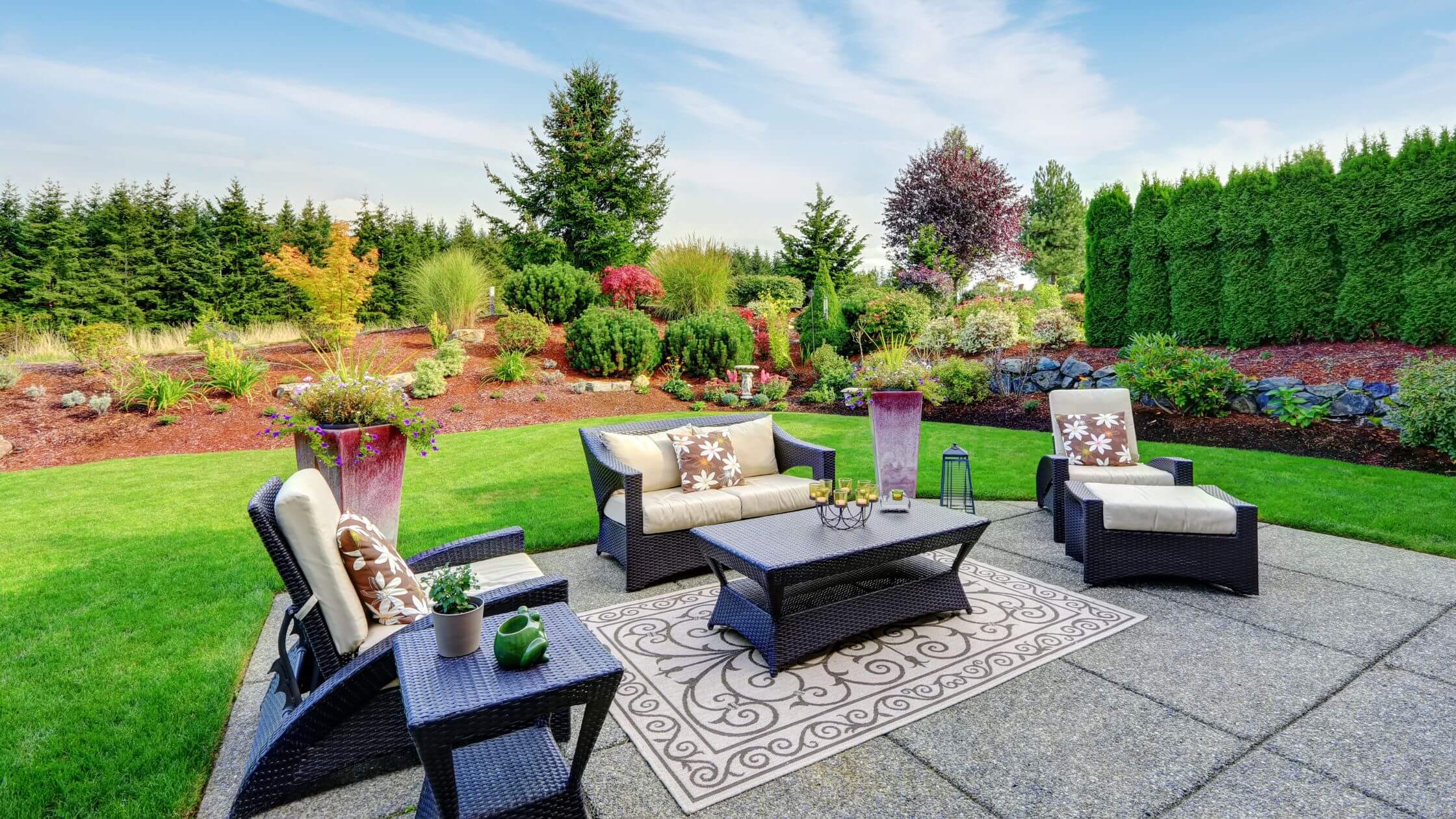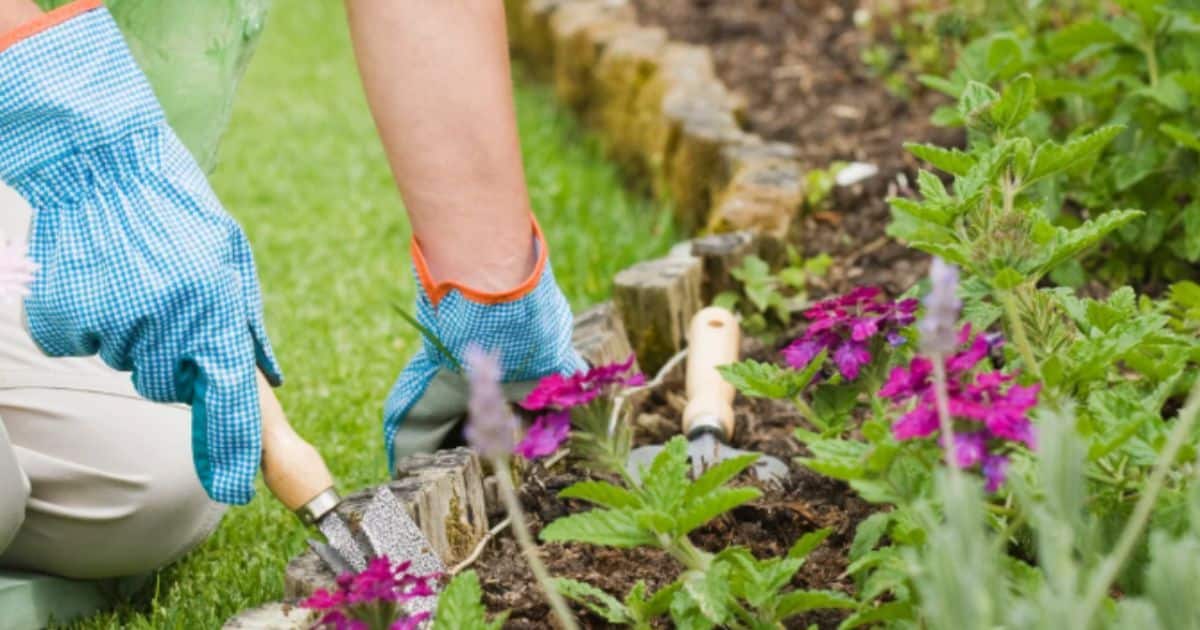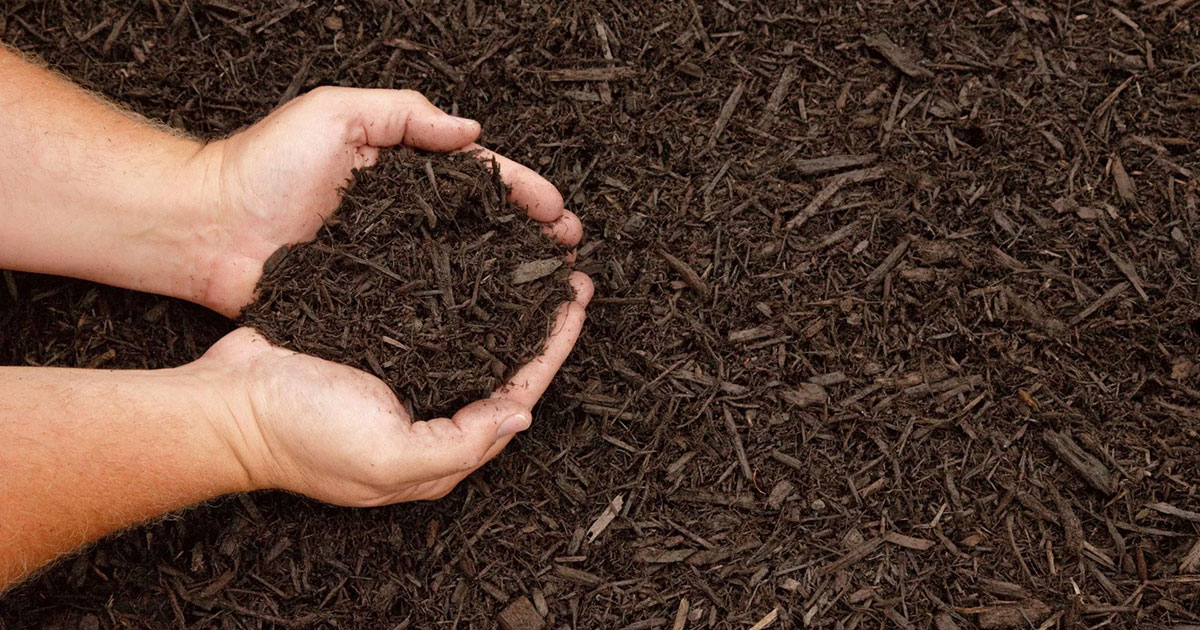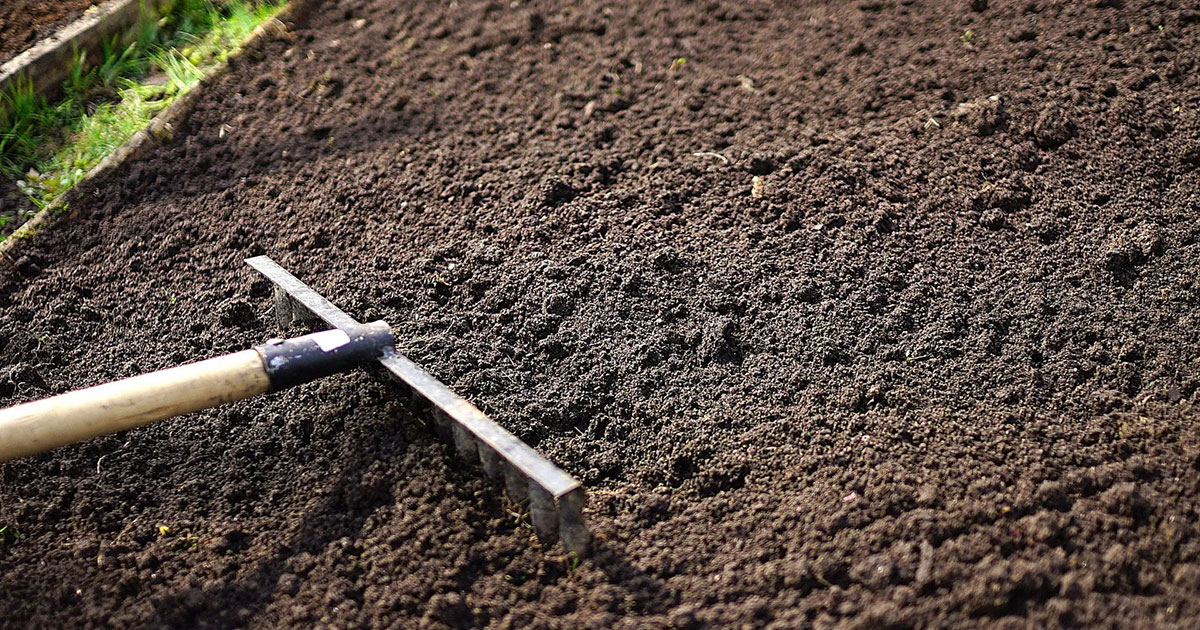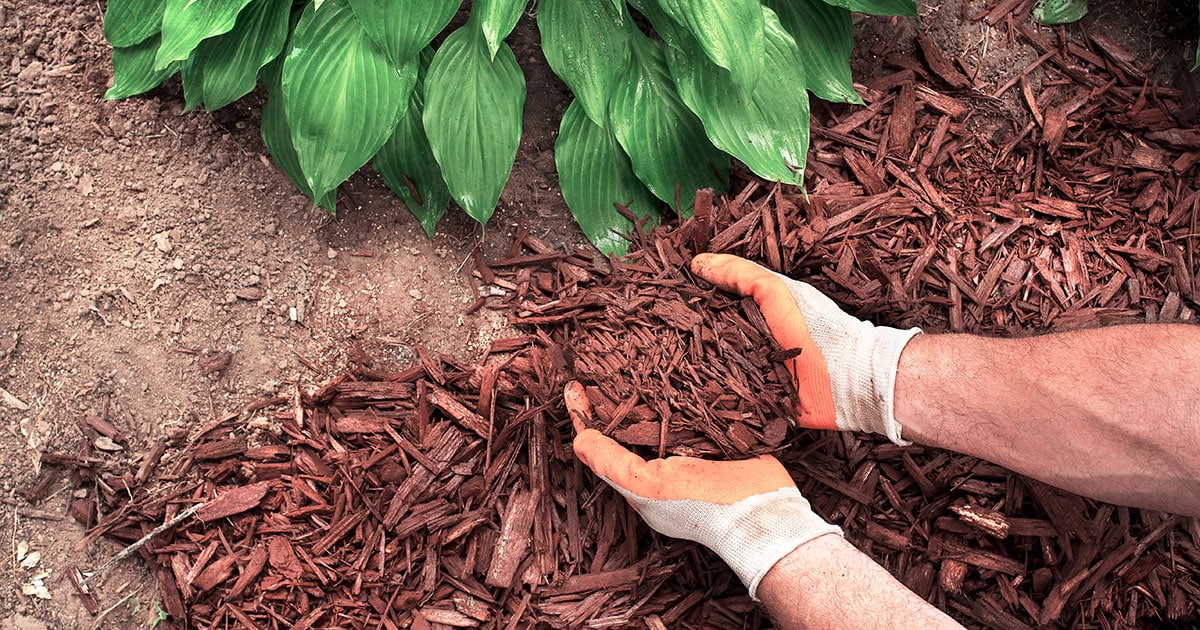1. Clean Up Winter Mess
- Remove fallen branches, leaves, and other debris from your lawn and garden beds.
- Use a rake or blower to clean up and create a tidy and flat foundation for planting.
- Dispose of the debris to keep your yard looking neat.
Why Does This Matter? Cleaning up all the debris from the winter prevents pests from lingering in your yard and allows sunlight, water, and nutrients to reach the soil. A clean and tidy yard is a strong foundation for a healthy and vibrant landscape.
2. Revitalize Your Lawn
- Aerate the soil to improve drainage and allow nutrients to pass through.
- Reseed bare patches for a fuller, greener lawn.
- Apply a slow-release fertilizer to encourage healthy and steady growth.
Why Does This Matter? A healthy lawn boosts curb appeal and provides a lush foundation for outdoor activities. Aerating and fertilizing rejuvenates your grass, helping it recover from the winter damage faster and helps it grow stronger in the spring.
3. Trim Plants
- Cut back dead or broken branches from trees, shrubs, and perennials.
- Shape overgrown hedges and bushes to enhance their visual appearance.
- Avoid pruning spring-blooming plants until after they’ve flowered to preserve their buds.
Why Does This Matter? Trimming plants and bushes encourages plants to direct energy into producing new and healthy foliage. It also improves the overall beauty of your garden.
4. Refresh Mulch Beds
- Apply fresh mulch to garden beds to retain moisture, regulate temperature, and suppress weeds.
- Remove old, compacted mulch and replace it with a 2-3 inch layer, making sure to keep it away from plant stems.
- Add a layer of nutrient-rich topsoil to improve soil quality and help prepare for planting.
Why Does This Matter? Fresh mulch and topsoil improve the overall structure of the garden. Additionally they provide necessary nutrients for the plants and create an attractive and clean appearance for your garden beds.
5. Improve Soil with Sand and Topsoil
- Mix sand into heavy clay soils to improve drainage and aeration.
- Use topsoil to replenish garden beds and create a healthy base for new plants.
- Combine sand and topsoil to level lawns and fill low spots, ensuring even water distribution.
Why Does This Matter? Having balanced soil improves plants growth and health by allowing the proper drainage, aeration, and nutrients. Using a mixture of sand and topsoil helps eliminate issues such as compaction and poor water absorption.
6. Reassess Your Landscape Design
- Take this opportunity to redesign areas that need improvement or look outdated.
- Create new garden beds, expand pathways, or add water features for a refreshed look.
- Plan for future projects, such as adding a stone fireplace or new grilling area, to enhance your yard.
Why Does This Matter? Reassessing your design allows you to optimize the space you have for landscaping to the fullest. Making strategic changes keeps your outdoor space fresh and appear more inviting.
